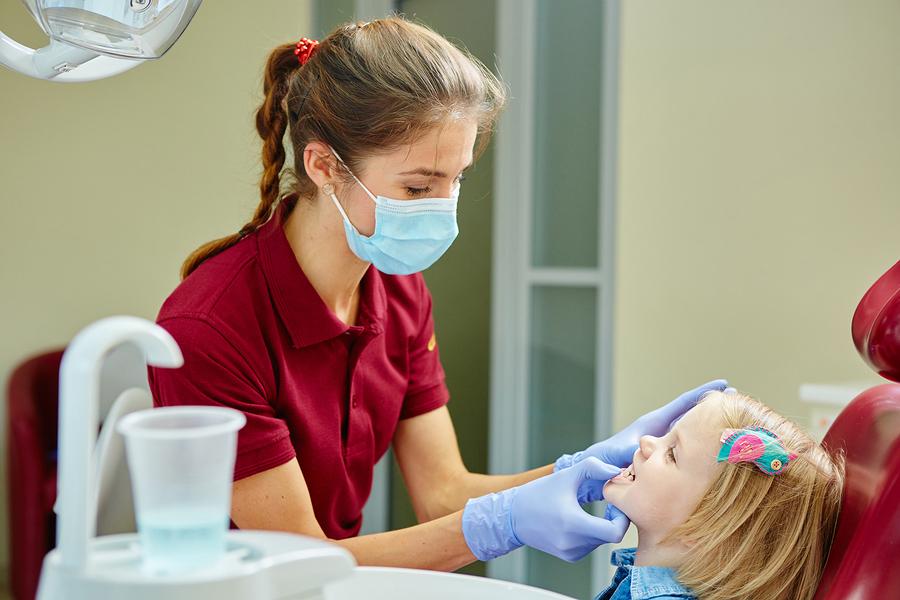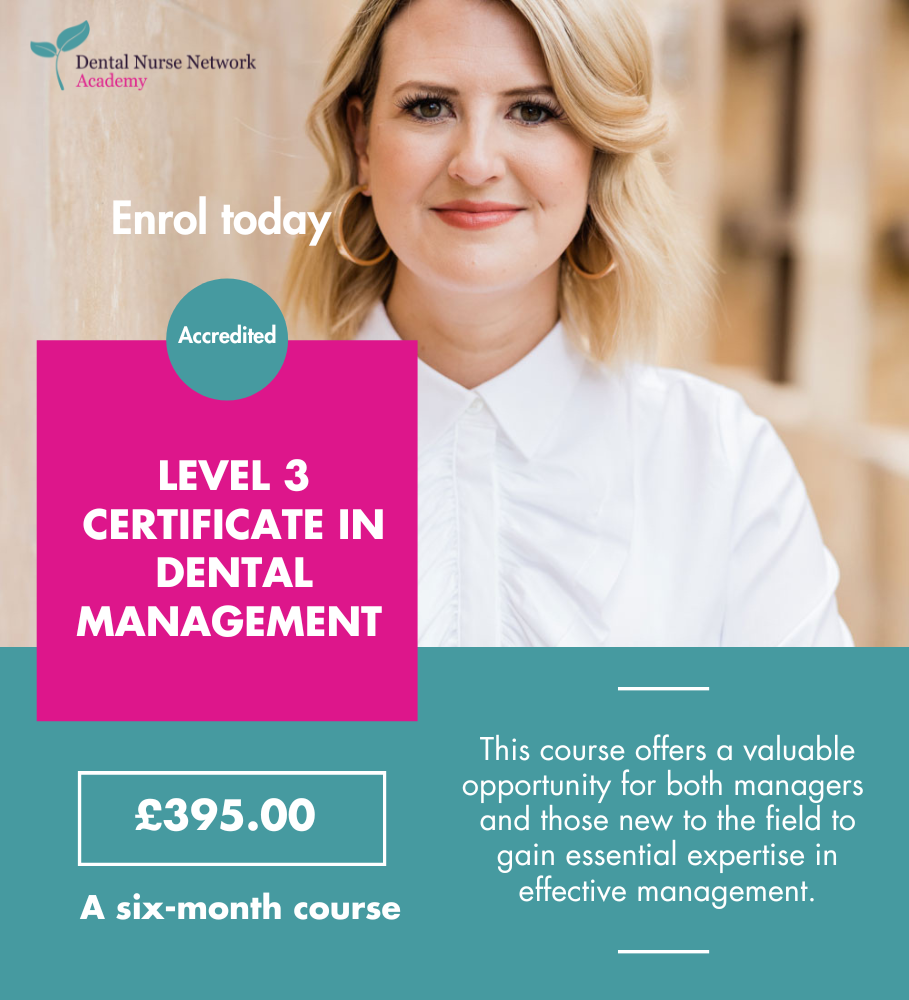 The Role of the Oral Health Educator in Giving Dietary Advice
The Role of the Oral Health Educator in Giving Dietary Advice
The Oral Health Educator is in a great position to give dietary advice to patients in order to make their treatment more successful. If you are still struggling to convince your employer that having an Oral Health Educator will be beneficial to the practice, point out that the success of many treatments depends on how the patient cares for their own oral health.
The greatest example of this is orthodontic patients, particularly those with fixed appliances. Any foodstuffs that are sticky, crunchy or chewy could dislodge brackets and prolong their treatment unnecessarily so it is important that someone takes the time to discuss this with them. Also, a lot of damage done to teeth whilst wearing a fixed appliance is down to fizzy drinks, so we need to educate these patients about reducing the frequency of their sugar intake – particularly in this form. Clear, removable braces are becoming more and more popular and these stop the saliva washing over the teeth. This means that the teeth do not benefit from the 'natural mouthwash' effect of saliva. Strict hygiene advice should be adhered to but it is also extremely important to encourage these patients to reduce the frequency of their sugar intake.
Oral Health Educators often see younger patients. If you have young patients with a high caries rate, it is vital to spend time with them and their parents to educate them on how to prevent this. So many patients think this is down to their oral hygiene alone and do not consider diet to be a factor. When speaking to younger patients, please do ensure you speak to them rather than to their parents. Although the parents should be involved in their child's treatment, you will achieve better results if you let the patient take ownership of their own health rather than ask a parent to dictate to them. When moving from primary to secondary education, many children begin to make their own choices about their diet for the first time in their lives, so we should try and educate them to help them make healthy choices. When moving to university, teenagers often leave home and are responsible for their diet full-time. We often see an increase in caries rates among new university students. Again, education is the key to helping them make healthy choices.
Most patients I have seen for dietary advice have been younger patients, with the main group of adults being those who have begun orthodontic treatment. However, you will still see some adult patients for dietary advice. We must never assume that a patient has the knowledge they need simply because we do. I was speaking with a patient and hygienist only this week about how confusing dietary advice can be these days. There are so many different opinions and the advice given is constantly changing so that even patients who have previously not needed any dietary advice could find themselves needing some guidance.
My Experiences
When I first qualified as an Oral Health Educator, I worked in a practice with an NHS orthodontic contract. Two sessions per week were set out for this work only. The majority of these patients were children but we did see a few adult patients as well. As I mentioned before, a lot of damage done to teeth during orthodontic treatment can be caused by fizzy drinks. Teenagers often consume a large amount of these and can take some persuading to reduce their intake. I had a laminated picture of a mouth with caries after a fixed appliance was removed to illustrate to them what could happen. This worked well and was often very motivating for these patients. As orthodontic treatment can take a long time, ensure you do not just see these patients at the start of their treatment. Messages will need to be reinforced throughout their treatment to keep them motivated.
I found that using a laminated graph of the Stephan Curve was a good way of demonstrating demineralisation to patients. I would ask them to complete a diet sheet beforehand (usually for one week). After explaining the graph, I would get them to draw one of their days over the example and analyse it themselves. It is better to ask patients to complete the diet sheet throughout the week rather than at the appointment as they can often forget about drinks and snacks and tend to concentrate on main meals only. This will not be a true representation of their diet. It is always good to have a follow-up appointment after this to check your patient's understanding. I once had a patient who returned for her follow-up appointment stating that she always waits an hour before eating or drinking something else and had obviously completely misunderstood what I was trying to teach her!
I also use laminated cards with food and drink options and ask patients to sort them into piles of healthy and unhealthy options. This works better with younger patients, but a similar idea can be used for older ones. I use lots of empty packets and ask patients to locate the sugars in the ingredients lists. This equips them with the knowledge to make better choices in their daily lives as they know what to look out for. To make this into a game for younger children – who may find simply reading the packets boring – you could get them to fill the empty packet with as many teaspoons of sugar as a full packet of the product would contain. Do make sure you allow adequate time for this, though, and be prepared for some cleaning up afterwards! Make sure you add fizzy drinks and fruit juices to this, as patients are often shocked at how much sugar they contain.
Tips and Advice for Getting Patients on Board
The best way to get patients on board is to use lots of resources! It can be time-consuming to create these and to think of the ideas but many resources can be laminated and used again with other patients. Think about the ways you yourself learn. Do you remember everything you have been told if someone is simply telling you the facts? Do you remember more when you have done things yourself and had some 'hands-on' experience? You can really get creative here, and if you get to know your patients you can make the resources relevant to them and to their hobbies and interests. Use a range of resources that are interactive for your patients.
To help make your resources more relevant and interesting to your patients, do try to get to know them and build a good rapport. If they trust you they are more likely to listen to you and trust what you say. Be friendly and empathetic and allow your patients to feel they are in a safe, non-judgemental environment. They need to be able to be honest with you about the obstacles they face for you to be able to help them find ways to overcome these. Patients will not share these with you if they feel they are being judged.
Take the time to explain to patients why what you are teaching them is relevant and how it can help them. Again, think about your own experiences here. If you want to do something and someone tells you 'no', you may be upset and still want to do it anyway. If someone says no but explains the reasons why, you are much more likely to accept what they are saying.
Summary
The key messages to take away from this article are to take the time to work with your patients and treat them as individuals. You need them to take ownership of their own oral health and we are here to equip them with the knowledge to do this. We should act as a resource base through which they can gather information and advice, and we should provide them with an environment where they can be honest with us so we can help and guide them effectively. We cannot be with our patients all the time and make their decisions for them, so effective education really is essential for them to be able to transfer your advice to their daily lives.
Katie Booth RDN


